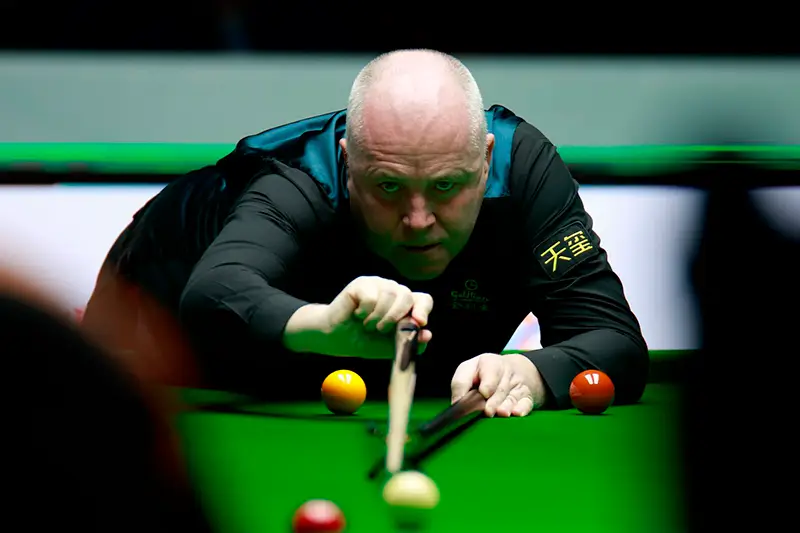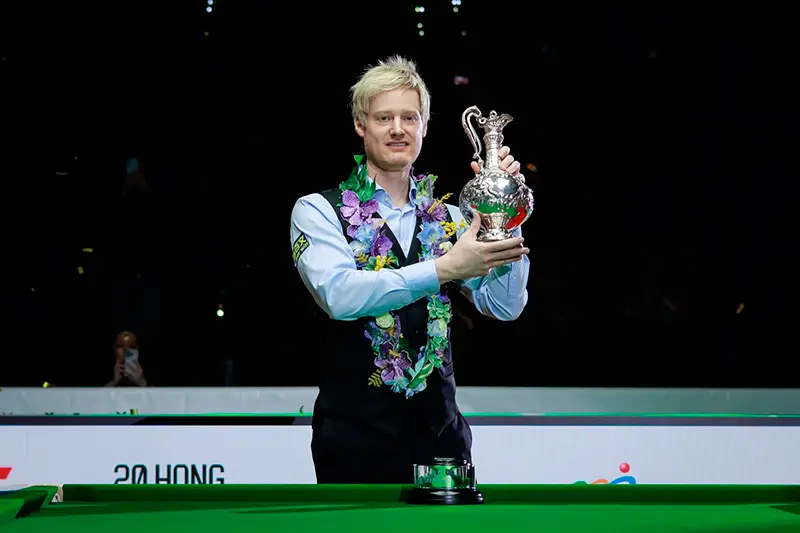World Grand Prix snooker tournament is one of the most prestigious events in the world of professional billiards. The special system of participants selection, dynamic format and solid prize money make it the most important event of the season.
Unlike open-access championships, in this case only the strongest players – those who are included in the world ranking – compete.

Each match brings spectacle and an opportunity for snooker players to consolidate their position in the world rankings. Winning the World Grand Prix snooker tournament gives a player a serious advantage in the battle for the top spot on the professional tour. It brings together the best cue masters who demonstrate precision, strategy and nerves of steel.
History and evolution of the tournament
The World Snooker Grand Prix came into existence in 2015 and immediately became a landmark event on the professional tour calendar. The first tournaments were held in different formats. Over time, a clear system centred on the ranking of the best players was established. Since 2019, the World Grand Prix snooker tournament has become one of the key events influencing the distribution of ranking points.
Billiards legends O’Sullivan, Judd Trump and Neil Robertson are among the winners of the tournament. Each new version of the tournament has brought spectators dramatic matches, unexpected outcomes and impressive series breaks. In 2025, World Grand Prix 2025 promises to once again be an arena for intense title contention.
World Grand Prix Rules
The World Grand Prix snooker tournament differs from other snooker tournaments due to its strict qualification rules. Only the top 32 players, selected on the basis of season results, participate in the event. This makes the event as competitive as possible. Every mistake can cost a victory.
The format provides for elimination matches starting from 1/16 finals. In the first stages, the games are played to four wins, but closer to the finals the requirements become stricter. Semifinals are held up to six victories, and in the final duel it is necessary to score ten frames. This structure of the competition makes the rules of the World Grand Prix one of the strictest in the world of billiards.

The decisive factor of success becomes tactical thinking and psychological stability. Even the most experienced players, such as O’Sullivan, are not immune to defeat if they cannot keep up with the pace of play. It is this intensity that makes the World Grand Prix snooker tournament so entertaining.
Tournament format: from qualifying to finals
 The World Grand Prix format provides for the participation of 32 highly ranked players. This approach guarantees a high level of competition and no random participants.
The World Grand Prix format provides for the participation of 32 highly ranked players. This approach guarantees a high level of competition and no random participants.
Qualifying Stages
At the first stages of the tournament athletes face off in a best-of-7 format, where they must win four frames to advance. No mistakes can be made at this stage, as the loser is immediately eliminated from the competition. This system forces players to demonstrate maximum concentration and strategic thinking from the very first matches.
Quarter-finals and semi-finals
At this stage, the intensity of the competition increases. Best-of-11 games require players to win six frames. The matches test not only skill but also stamina, as the games can last several hours. Tactical planning, competent shot selection and mental toughness become the determining factors of success.
Finals
The final is a best-of-19 encounter, with ten frames to win. The final matches of a snooker tournament are marathons. It is all about technique, strategy and the ability to stay focused for long periods of time. A finalist losing a few frames can turn the tide by showing composure and composure.
This structure of the tournament makes it one of the most difficult. There are no easy wins – every match requires complete dedication and extreme precision. World Grand Prix 2025 will be another test for the best players. Even experienced champions can drop out in the early stages if they don’t play consistently.
World Grand Prix 2025 prize money: how much the winners will earn
The prize money for the World Grand Prix 2025 is traditionally high. This season the total budget for the event is £380,000, of which the winner will receive £100,000. The prize money is distributed as follows:
- Winner – £100,000.
- Finalist – £40,000.
- Semi-finalists £20,000.
- Quarter-finalists £10,000.
- Other participants – £5,000.
This payout system makes the World Grand Prix snooker tournament financially attractive even for those who don’t make it to the final.
Where to watch World Grand Prix 2025
World Grand Prix 2025 is available on leading sports channels and streaming services. Matches are shown on Eurosport, BBC Sport and online platforms such as DAZN. Particular interest in the tournament is shown by viewers from Hong Kong, where billiards occupies an important place in sports culture.
Thanks to convenient broadcasts, the World Grand Prix Championship is available to fans all over the world, allowing them to follow the matches in high quality and enjoy the play of the greatest snooker masters.
Conclusion
 The World Grand Prix snooker tournament has long been an integral part of professional billiards. The competition brings together the best players, spectacular matches and a prestigious prize fund. The championship promises to give fans unforgettable moments, dramatic matches and an exciting fight for the title. The whole world will be watching this event, as it determines the fate of athletes and the balance of power in the rankings.
The World Grand Prix snooker tournament has long been an integral part of professional billiards. The competition brings together the best players, spectacular matches and a prestigious prize fund. The championship promises to give fans unforgettable moments, dramatic matches and an exciting fight for the title. The whole world will be watching this event, as it determines the fate of athletes and the balance of power in the rankings.
 en
en  ru
ru  de
de  ar
ar  es
es  nl
nl  hi
hi  fr
fr  it
it  pt
pt  el
el 



